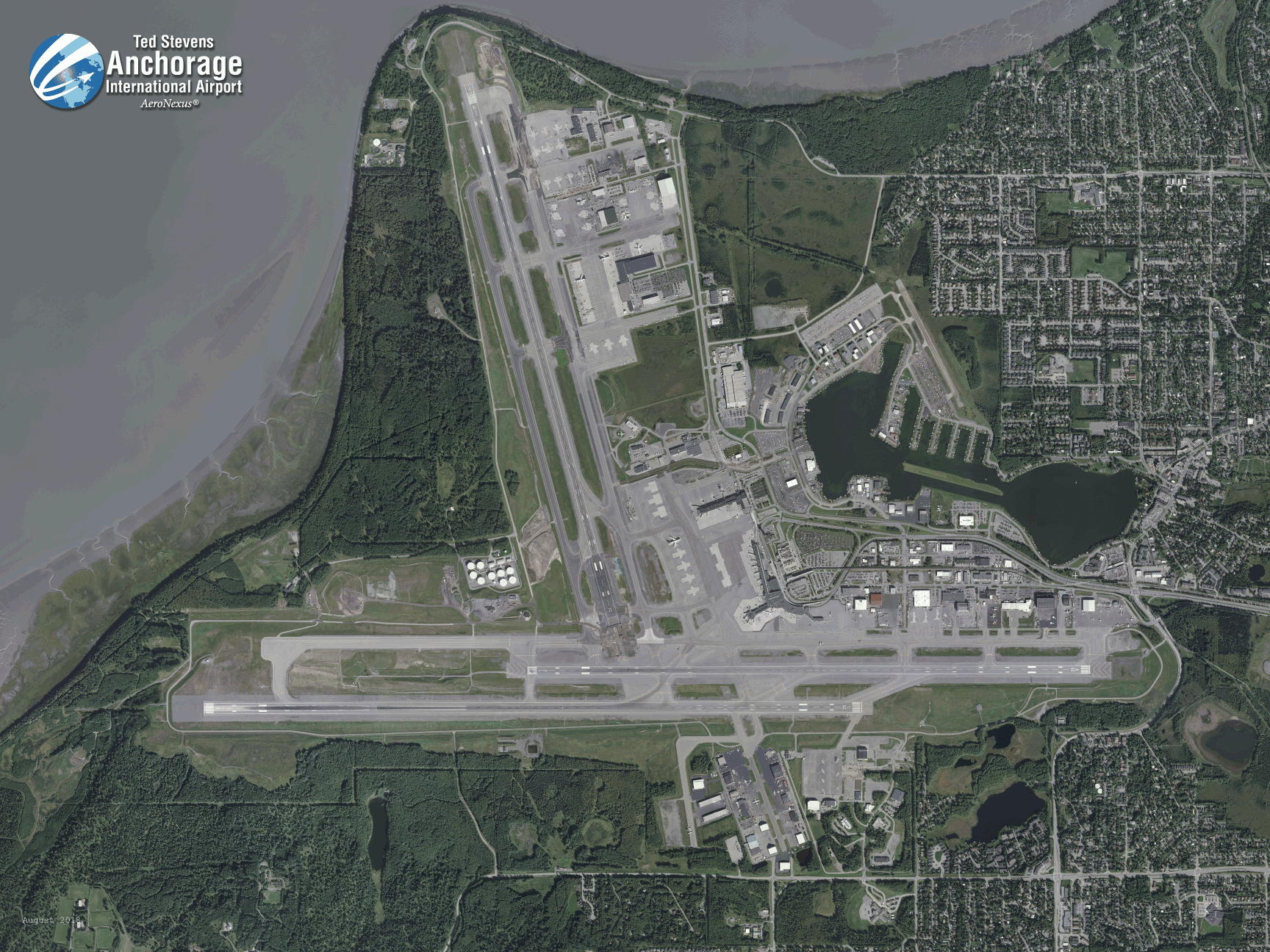CONGRATULATIONS!
WELCOME TO ANCHORAGE!
If you are reading this page you've likely just accepted an offer to Anchorage ATCT/Tracon, so we'd like to be the first to say WELCOME!
If you click on the button below, you can download our FREE Anchorage, Alaska Community Guide that will further help you know all about your next home! We have covered everything from things to do, schools and much more!
Anchorage, located in south-central Alaska and surrounded to the east by the beautiful Chugach Mountains, awaits your arrival to the land of the Midnight Sun. The information on this page will assist you by answering questions you might have regarding the Anchorage area. I hope this information will make your transition to Anchorage a simple one.
INTRODUCTION
• The Anchorage Air Traffic Control Tower provides a full range of terminal air traffic control services to the Anchorage area. The tower and approach control functions were split in October of 1991. ANC is an ATC 8 limited radar approach control tower. A11 (TRACON) is an ATC 9 radar approach control. The control tower operates two Local Controls, ANC and Lake Hood (LHD). Operationally, Anchorage and Lake Hood are considered one airport although the State of Alaska lists them separately because of their diversified usage and individual federal funding.
• As the largest city in Alaska, Anchorage has over 50% of the state's population. The original town was founded around 1915 to serve as headquarters for the government-owned Alaska Railroad. Abundant gold, coal, and mining resulted in steady growth during the early years. Anchorage soon became the transportation hub of the north.
• During and after World War II, Anchorage grew as a defense center. The military contributions to the aviation community include the majority of air defense missions in Alaska, and search and rescue. Elmendorf AFB, located on the northeast side of the city, is a part of the Pacific Air Force. It is the primary logistical center for the Air Force in this part of the hemisphere and is also the main base for Alaska's tactical fighter aircraft. The Alaska Air National Guard is a tenant of the Anchorage Int'l. Airport and operates from Kulis ANG on the south side of the airport. The Guard operates search and rescue helicopters and C-130 aircraft.
• Anchorage is a flying town. It’s geographical location makes it a natural refueling stop for air carriers of many nations. While many of the newer passenger aircraft are able to by-pass Anchorage and take shorter routes over Russian airspace, most cargo carriers must still stop at Anchorage International for fuel. Lake Hood is the busiest seaplane base in the world and Merrill Field is a busy general aviation airport. Several lakes and private strips in the area are also used extensively.
• Today, this city and its aviation community are still growing. We have come a long way from a simple weather advisory station to a ten story Tower and TRACON and from a Jenny making touch and go's on the Park Strip to the air crossroads of the world.
AIRSPACE
Anchorage Approach Control has an approximate 30-mile radius of airspace up to FL200. The area south and west of Anchorage is generally flat with one mountain, Mt. Susitna, in the western quadrant. The Chugach Mountain Range stretches along the northeast and eastern quadrants and the Kenai Range covers the southeastern quadrant. Because mountains surround Anchorage, the area is referred to as the "Anchorage Bowl".
AUTOMATION
Many ATC functions are now automated. For example, Sign-on log, the Position Logs, Daily Record of Operations, Traffic Count and Equipment Logs are maintained on computer. The STARS, Flight Data Processing system (FDP2000), Information Display System (IDS), ASDE 3, and AMASS equipment enhance our ability to handle increased air traffic, provide expanded service, and to modernize the ATC system. Classroom and proficiency training is augmented with the use of Computer Based Instruction (CBI). The CBI lab is equipped with three workstations, and computers are available for controllers to access email and FAA information.
STARS displays a data tag with the position symbol, aircraft ID, Mode C, scratch pad area, MSAW, Conflict Alert, and ground speed readout as well as many other features. We interface with Anchorage Center (ZAN) MEARTS since May 1987.
The Flight Data processing computer is called the FDP2000. TechOps and AT personnel developed this system at ZAN, and it is similar to the 9020 format. In the tower cab there is a FDP keyboard, CRT (monitor) display and printers at Flight Data, and scanners at the Local position. In the TRACON there are several keyboards, printers, and CRT's.
BRIEF HISTORY OF ANCHORAGE AIR TRAFFIC CONTROL
• Air traffic control came to Anchorage International Airport (ANC) in 1953 with the installation of a temporary military tower. This tower provided only VFR service to Anchorage International and traffic advisories to Lake Hood seaplane base (LHD). The Non-Radar Approach Control was located at Merrill Field, five miles away. In late 1953, the controllers at Anchorage moved into their first permanent tower after its completion on top of the original airport terminal.
• In 1954, the first of many shuffles came about. The Non-Radar Approach Control was moved from MRI to ANC. The original temporary tower at ANC was moved to the south shore of LHD and part-time separate air traffic control services came to LHD. The LHD tower was operated during the summer months as a regular VFR tower and during the winter months traffic advisories were provided by ANC Tower.
• Radar approach service was available in the Anchorage area for the first time in 1956 when the ASR2 was installed at ANC under a tent. In 1958, LHD got its own staff of controllers and became an independent Level I VFR Tower. The next year, 1959, Radar Approach Control was moved from ANC tower to the newly constructed Anchorage Enroute Air Traffic Control Center and combined with the Center to form a Center/Radar Approach Control (CERAP).
• Then came the devastating earthquake which struck Anchorage on Good Friday, 1964. When the earth stopped moving, one ANC controller was dead, two seriously injured, and the ANC tower had totally collapsed. The LHD tower and the controller inside survived.
• A new tower for ANC had to be built; but in the meantime, the traffic had to be worked. During the interim, all ANC traffic was worked from LHD Tower. The third ANC Tower was operational in 1965. It was a short, squat structure next to the Crash/Fire Station.
• In 1967, the Approach Control split off from the Center and began operating a Level II RAPCON using the new ASR5. The RAPCON was located in the base of the newly constructed control tower at Elmendorf AFB. This set-up remained until 1975. There had been upgrades and downgrades, but in the end, Anchorage was firmly established as a Level II VFR tower with LHD duties, and the RAPCON was established as a Level III Approach Control.
• In 1975, ANC Tower and RAPCON combined to create the new ANC TOWER/ RAPCON. The controllers worked in both the LHD and ANC towers and in the RAPCON at Elmendorf. Construction also began on the fourth, and present, tower. The new tower was finished in 1977, and operations were consolidated from LHD and the third tower. The controllers still had to travel between the airport and EDF to work the RAPCON while the IFR room was being added to the fourth tower. In January 1979, the IFR room was completed and ANC TOWER/RAPCON became ANC TRACON. It was later renamed Anchorage Tower (ANC ATCT). ANC ATCT became a Level IV facility in 1986.
• In October 1991, ANC ATCT was split operationally into two facilities- ANC Tower and A11 TRACON. The two facilities are administratively one facility as ANC ATCT. With the splitting of the facility, A11 remained a Level IV facility and ANC was downgraded to a Level III Limited Radar Approach Control Tower. Today, under the new classification system, ANC ATCT is a Level 8 Limited Radar Approach Control Tower, and A11 is a Level 9 TRACON

WHAT CAN YOU BUY IN
ANCHORAGE AS A CONTROLLER?
Quite affordable.
